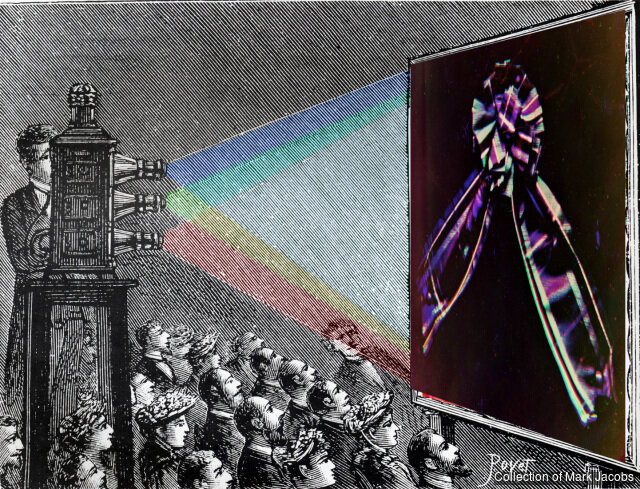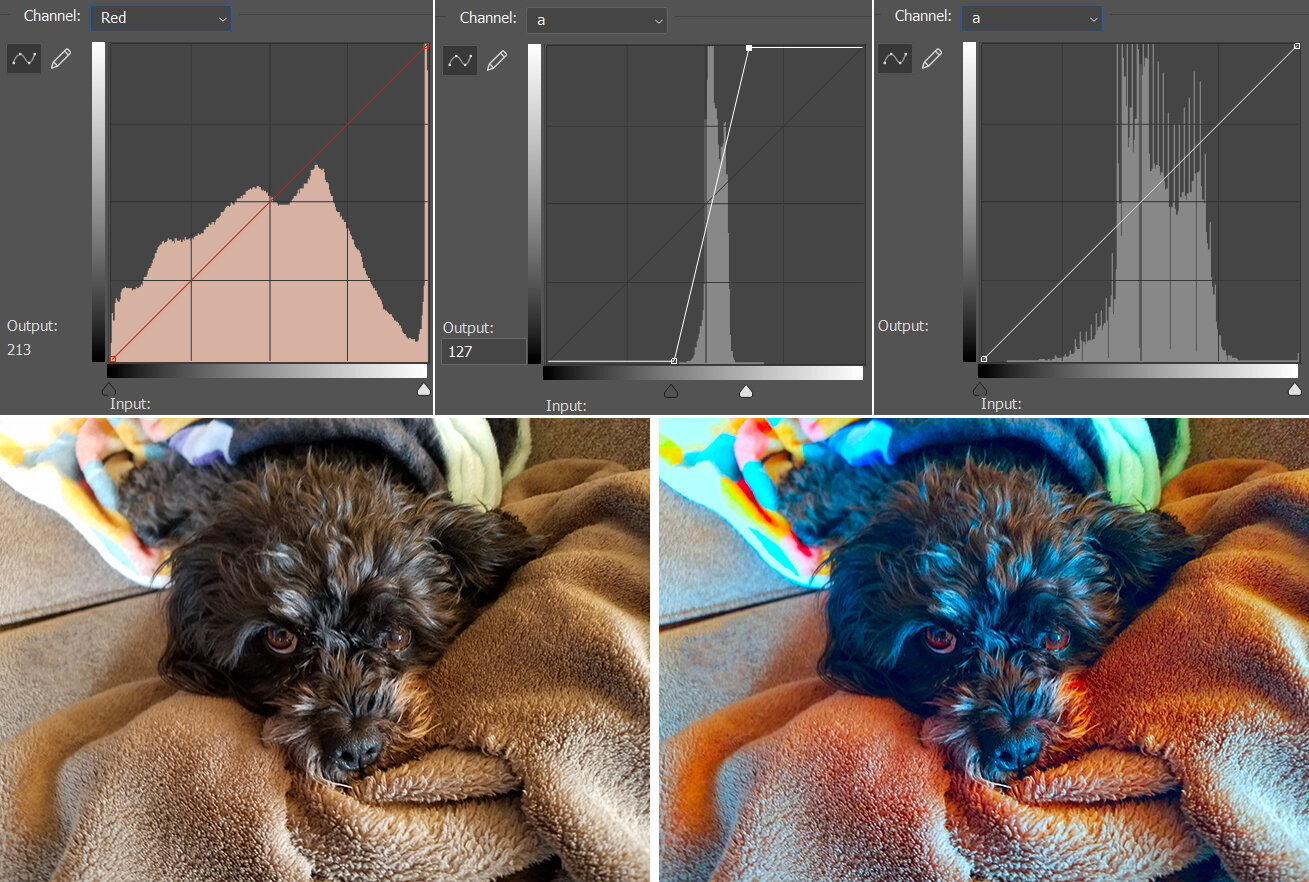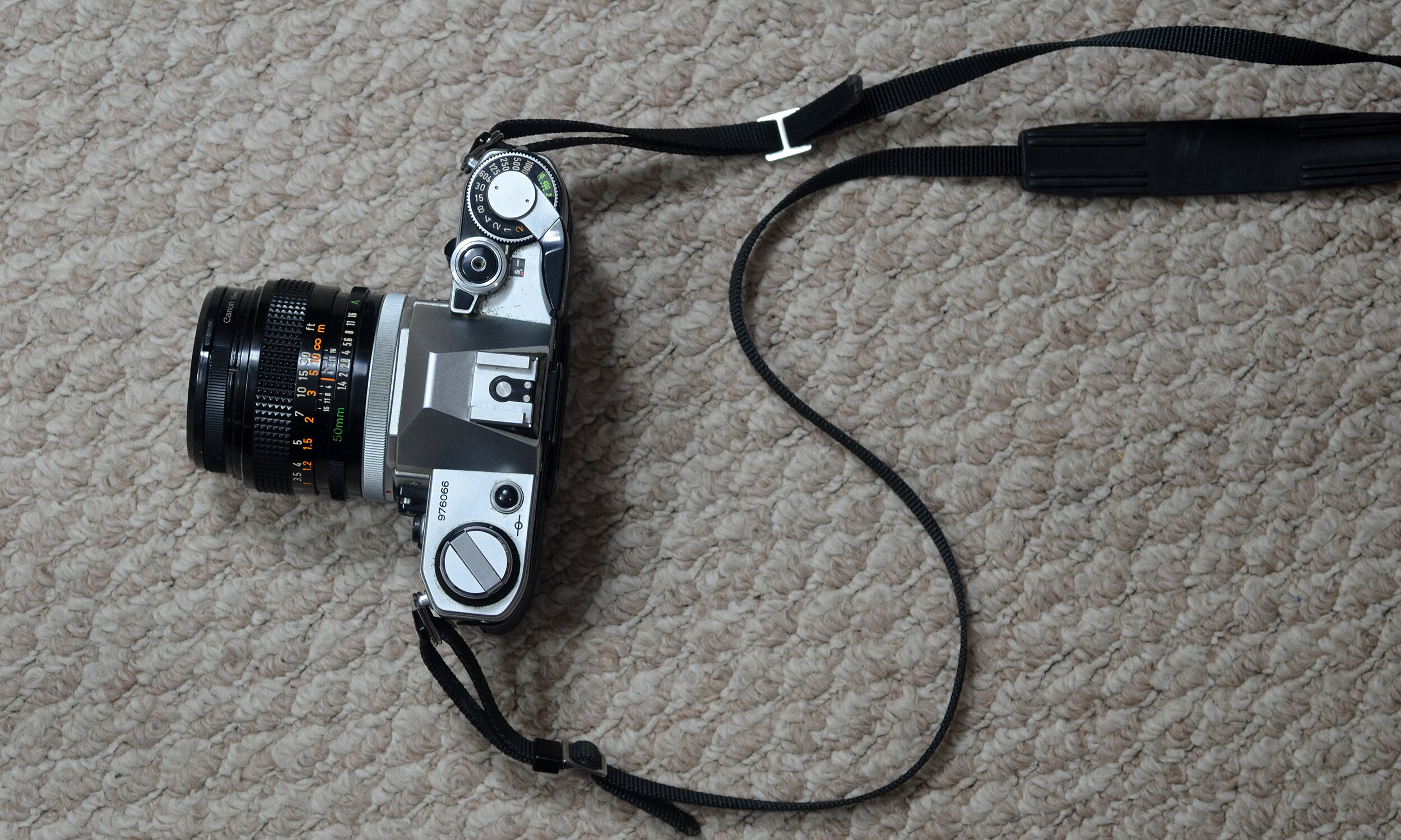
Could an Old Theory of Color Vision Make Our RGB Cameras, TVs and Computer Screens Obsolete?
After centuries of scientific, technical and artistic investigation, our understanding of human color vision remains incomplete. In particular, two different theories of color vision have been under discussion for a very long time, with neither theory quite able to claim victory. Explore the areas where the two theories agree, ways in which they differ, and ways in which the difference might impact the future of color imaging. One question is whether our modern RGB cameras, TVs and computer screens might become as obsolete as the film cameras and analog projectors they replaced.
Click here to view or download the 7-page paper in pdf format
scroll down for highlights about the theory
or click here for more details about a potential camera of the future.
Current color imaging technology is based on the Trichromatic Theory of Vision
Thomas Young presented the theory in 1802, hypothesizing that the human eye has only 3 types of color receptors. In 1852, physicist James Clerk Maxwell worked with photographer Thomas Sutton to produce the first full-color photograph. Sutton captured 3 separate gray-scale images of a ribbon through red, green and blue filters. Maxwell combined the 3 images through similar filters to produce what seemed to be all the colors of the rainbow. It took nearly 5 decades before photographic chemistry developed to the point of capturing and replicating 3 separate images on 1 sheet of film. The basic principle of superimposing separate red, green and blue (RGB) images survived the transition to digital photography and still remains the basis for virtually all cameras and display devices.
New data supports the theory, but with modifications
We now know that each of our 3 types of color receptors (called “cones”) responds to a range of colors, not just to pure red, green or blue. It is possible to fool humans into believing they see any color of the rainbow by properly stimulating the cones. To humans with normal vision, pure green plus pure red, for example, appears identical to pure yellow, although a spectrometer or prism easily reveals they are quite different. Modern cameras and display devices generally try to emulate the response curves of our eyes rather than using pure red, green and blue., but each device does so a little differently. RGB color data collected with a specific camera under specific conditions often appears highly distorted when displayed on different screens unless the math and the hardware are carefully tuned to match.
Image credit: Ben Rudiak-Gould, Public domain, via Wikimedia Commons
The challenger is “Opponent Process Theory”
In 1892. physiologist Ewald Hering addressed what he saw as limitations of Trichromatic Theory and proposed an alternative view. One phenomenon which trichromatic theory cannot explain is “afterimages.” People who stare at a blue dot for 20 seconds and then look at a white surface often report they see a yellowish afterimage. To explain this and other observations, Hering proposed that the information actually reaching our brains is NOT the strength of stimulation received by the separate R, G and B receptors, but rather a comparison of that stimulation in pairs. In the modern math of Hering’s theory, a* compares red to green and b* compares yellow to blue. L* expresses brightness as a quantity independent of hue.
Hering’s theory and an artist’s wheel
Scientists’ generally view visible colors as forming a line of wavelengths with distinct ends. Artists and designers are more likely to think of hues as forming a wheel with magenta folded back and transitioning to red just as smoothly as red transitions to yellow. The wheel is important not just as a technical guide for mixing paints, but also as an aesthetic guide. Yellow and blue, for example, lie roughly opposite each other on the wheel to form a complimentary pair. Not only do yellow and blue pigments combine to form neutral grays, but these hues also compliment each other when placed side-by-side, producing a particularly dramatic impact.
(Image used by permission, © Mpavlov, Dreamstime.com)
Both theories may be correct and both are still in practical use
We do not yet have a full and unified theory of human color vision, but one possibility is that trichromatic theory is the best description of events at the level of receptors, while opponent process theory describes pre-processing of the raw intensity data which might occur in the optic nerve. Image processing software such as Adobe Photoshop provides options to work with either the multitude of RGB systems which suit different cameras and output devices or an L*a*b* system, which Photoshop calls “Lab Color.” Unlike the various RGB systems, the L*a*b* system is “device independent, referenced to the actual human experience of color, not to the characteristics of specific camera or display devices. More Photoshop details.
Is Digital RGB becoming obsolete?
L*a*b* is sometimes called the “gold standard” of image processing, since it seems closer to the actual human experience of color than is RGB. There are, however, no L*a*b* cameras or display devices on the market. It seems very unlikely that commercially viable L*a*b* cameras or computer screens will come to market anytime soon. It seems every less likely, however, that RGB will rule the world of color imaging forever.





